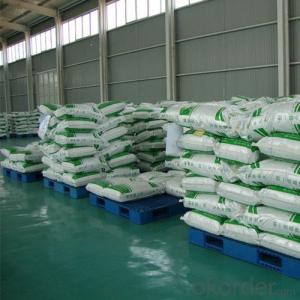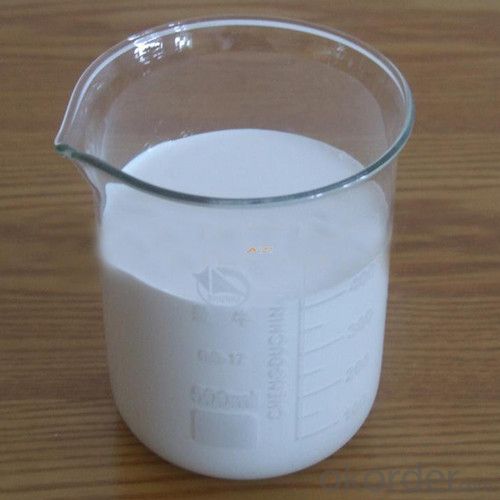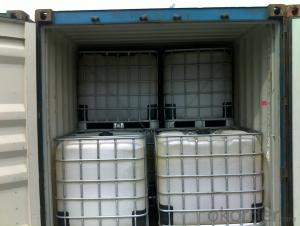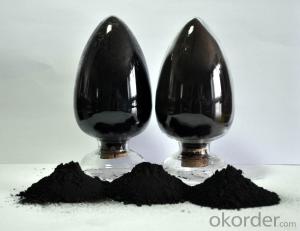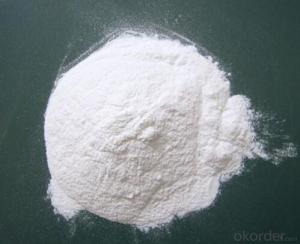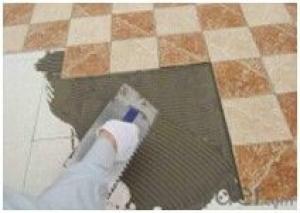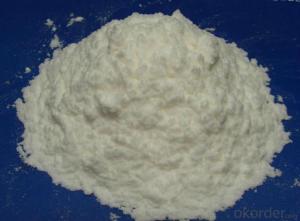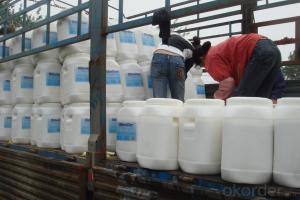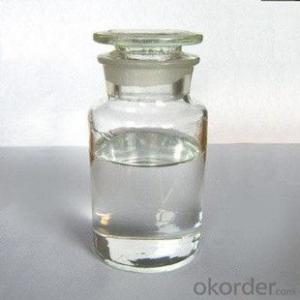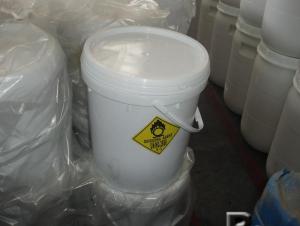HPMC for Wall Putty, Tile Adhesive Dry Mix Mortars
- Loading Port:
- Tianjin
- Payment Terms:
- TT OR LC
- Min Order Qty:
- 5000 kg
- Supply Capability:
- 5000000 kg/month
OKorder Service Pledge
OKorder Financial Service
You Might Also Like
Building Construction Hydroxypropyl Methyl Cellulose (HPMC)
Brief introduction:
Hydroxypropyl Methyl Cellulose (HPMC) helps building materials apply more easily and perform better. They provide water retention and cohesiveness to mixtures. With special modification, it can be used to control thickening, water demand, workability, sag resistance, strength and other important properties of the final product.
It is widely used as thickener, adhesive, water preserving agent, film-foaming agent in building materials, industrial coatings, synthetic resin, ceramic industry, medicine, food, textile, agricultural, cosmetic and other industries.
Physical and chemical index:
Item | Specification |
CAS NO. | 9004-65-3 |
Appearance | white or light yellow powder |
Moisture Content | ≤5.0% |
PH | 4.0-8.0 |
Particle Size | min. 98% pass through 100 mesh |
Viscosity | 100cps-200000cps, 2% solution |
Application in Building:
External wall insulation system (EIFS)
>Bond strength: HPMC can provide the greatest degree of high adhesive bond strength of mortar.
>Performance: The mortar added HPMC has the right consistency, non-sagging. When using, the mortar is easy to work continuously, uninterrupted.
>Water retention: HPMC can wet the wall insulation easily, easy to paste, and also make other additional materials reach the best affects.
>Absorbent: HPMC can minimize the air-entraining volume, lower water absorption of mortar.
>Recommended brand: 75CMAX75000(S), 75CMAX100000(S), 75CMAX200000(S)
Interior and exterior wall interface agent
>Easy to mix, without of agglomeration: HPMC can significantly reduce the friction in the dry powder during the process of mixing with water, which makes it easy to mix and save the blending time.
>Water retention: HPMC can significantly reduce the moisture absorption by the wall. Good water retention can ensure the cement compound with a longer time, also can ensure that workers are able to carry out many times of scraping for the putty on the wall.
>Good working performance stability: even in high temperature environment, HPMC can still maintain good water retention. it is suitable for construction in the summer or hot areas.
>Increased water demand: HPMC can significantly improve the water demand of the putty materials. On the one hand, it improves the operational time after putty put on the wall, on the other hand, it can increase the coating are of the putty, which can make the formula more economical.
>Recommended brand: 75CMAX60000(S), 75CMAX75000(S)
Tile adhesive
>Water retention: HPMC can reduce the moisture absorbed by the substrate and the tile, retain the moisture in the adhesives as much as possible, making mortar still have adhesion after coating for a long time. Significantly extend open time and makes bigger coating area for the worker each time, and improve the efficiency.
>Improve bond strength, improve anti-slip performance: HPMC ensure non sagging of the tiles during working, especially for heavy tile, marble and other stone materials.
>Work performance: The lubricity of HPMC can increase the workability of the mortar significantly, which makes the mortar easy to coating and improve efficiency.
>Improve mortar wetting property: HPMC give mortar consistency, enhance the wetting ability of mortar and substrate, increase the binding strength of wet mortar, especially for the recipe with high water cement ration;
>Recommended brand: 75CMAX40000(S), 75CMAX75000(S), 75CMAX100000(S)
Crack Filler
>Workability: provide the right viscosity, plasticity, and easy to work;
>Water retention: can make the slurry fully hydrated, extending the working time and avoid cracking.
>Anti-hanging: HPMC can make a strong adhesion on the surface for the slurry and not sag;
>Recommended brand: 75CMAX40000(S), 75CMAX75000(S), 75CMAX100000(S)
Self-leveling mortar
>Prevent bleeding: HPMC can play a very good role to prevent the slurry sedimentation, bleeding.
>Maintain liquidity, and improve retention: low viscosity HPMC will not affect the slurry flow effect and easy to work. While possesses certain water retention, makes the good surface effect after self-levelling and avoid cracks.
>Recommended brand: 75CMAX400~600
Gypsum-based plaster
>Water retention: HPMC can retain moisture in the mortar, thus make gypsum completely solid. The higher the viscosity is, the stronger the water-retention capacity, vice versa..
>Sag resistance: allow the worker make the thick coating without causing ripple building.
>Mortar yield: For fixed weight of dry mortar, the exist of HPMC can provide more wet mortar.
>Recommended brand: 75CMAX75000(S), 75CMAX100000(S)

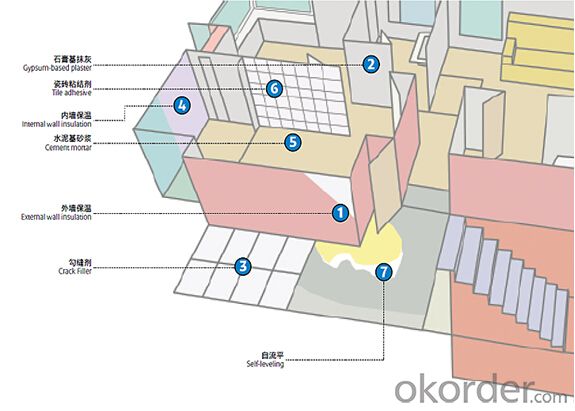
FAQ
Q1.Could we have the sample to test the quality?
Kindly send us your address, we are honored to offer you samples.
Q2. How does your company do regarding quality control?
CNBM a Chinese state-owned enterprise ranked 270th among the global fortune 500 in 2015,
have accreditation in line with standard:ISO 9001:2000,SGS,CIQ certificate.
Q3:What's your Delivery Time?
In generally, the delivery time is 25 days-30 days.We will make the delivery as soon as possible with the guaranted quality.
Q4:What is the convenient way to pay?
L/C , T/T ,Paypal, Western Union and Escrow are accepted,and if you have a better idea , please feel free to share with us .
Q5:Which mode of transport would be better?
In general,we advice to make delivery by sea which is cheap and safe.Also we respect your views of other transportation as well.
- Q: Will the catalyst change the reaction rate in the chemical reaction?
- Many of the catalysts are specific in varying degrees, and when added to the chemical reaction system that it can catalyze, it must change the rate of chemical reaction, and of course both positively and negatively catalyzed. Chemical reaction rate, it can not be called a catalyst.
- Q: The chemical equation of heating reaction of benzene and hydrogen under the action of catalyst
- C6H6 benzene + 3H2 - (arrow) C6H12 cyclohexane (Ni catalytic heating)
- Q: I dont know what it is but when i open up my computer it comes up and it says that its not working? so i really dont know what to do.
- ATI Catalyst Control Centre is a control program for ATI graphics cards. If you have an ATI graphics card, go to the ATI website and download and reinstall the program.
- Q: Chemical catalyst in several ways
- In general, positive catalyst (accelerated rate) and negative catalyst (slowing down)
- Q: in my 99 ram 2500 v8 5.9 that code came up, not sure what to do about it or what it could be any ideas or help with be great thanks
- In after Robert M phaggotry. Oh, like that first poster said, be sure there aren't other faults causing the rear O2 sensor to pick up all that O2 in the exhaust...such as a rich-running engine.
- Q: Thorough explanation pls.
- A catalyst is a substance that increases the rate of a chemical reaction.
- Q: A substance involved in chemical reflection, but reflects the quality of the material before and after the change, you say it is a catalyst?
- A catalyst is a substance that accelerates the reaction rate of other reactions and whose quality and chemical properties do not change. Sometimes the catalyst can also participate in the reaction. The elemental iodine in the title is the catalyst for the decomposition of hydrogen peroxide.
- Q: Chemical "catalyst can speed up the chemical reaction rate of other substances," this sentence right?
- Wrong, the catalyst is divided into two kinds, one is to speed up the chemical reaction speed, and the other is the opposite
- Q: What are the methods of catalyst characterization?
- Chemical means, according to the different detection methods, methods are different, but is to explain the chemical properties, chemical structure characteristics.
- Q: Will the catalyst decompose during the reaction between two substances? Exp:the decomposition of hydrogen peroxide.Will the manganese 4 oxide decompose?
- Catalysts are not used/destroyed in any reactions, it merely speeds up the process by lowering the reaction activation energy. It functions by being able to weaken or break the required bonds necessary in the chemical reaction (thus lowering activation energy) through temporary and weak bonding to form a complex. In this case the H2O2 molecule will bind with the MnO2 molecule due to the complimentary sites (thus forming a complex) to weaken the bonds for decomposition, but after decomposition the products (oxygen and water molecules) break off from the catalyst (as there are no more complementary sites with them) thus the catalyst will not be destroyed.
Send your message to us
HPMC for Wall Putty, Tile Adhesive Dry Mix Mortars
- Loading Port:
- Tianjin
- Payment Terms:
- TT OR LC
- Min Order Qty:
- 5000 kg
- Supply Capability:
- 5000000 kg/month
OKorder Service Pledge
OKorder Financial Service
Similar products
Hot products
Hot Searches
Related keywords
